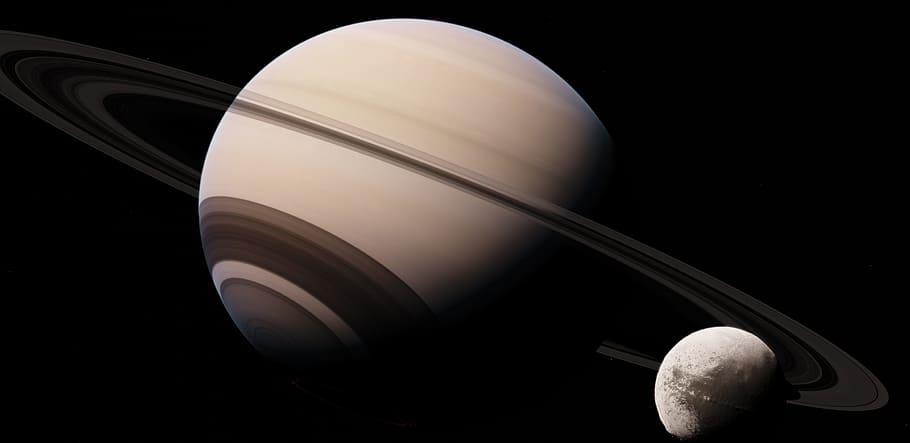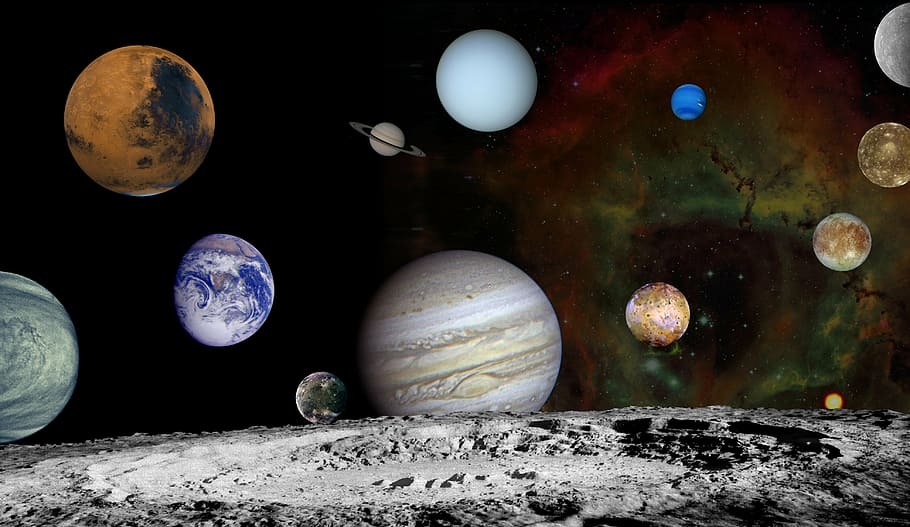The night sky has fascinated humanity for millennia, and among the many celestial wonders, natural satellites, commonly known as moons, have always held a special allure. These natural satellites, which orbit planets and other bodies, offer a glimpse into the complexities of our solar system and the forces that shape it. In this comprehensive guide, we will explore the diverse and intriguing world of the moons within our solar system, delving into their characteristics, origins, and the scientific endeavors that have expanded our understanding of these celestial bodies.

What are natural satellites?
Natural satellites are celestial bodies that orbit larger objects, such as planets or dwarf planets, due to gravitational forces. The most familiar example is Earth’s Moon, but our solar system hosts a multitude of these fascinating objects, each with its own unique features and mysteries. From the volcanic landscapes of Io to the icy crust of Europa, moons provide critical insights into the formation and evolution of planetary systems.
Earth’s Moon

Earth’s Moon, often simply called the Moon, is the fifth-largest moon in the solar system and the largest relative to the size of its planet. The Moon has been a focal point of human curiosity and exploration. It influences Earth in various ways, including tidal forces and stabilizing the planet’s axial tilt. The lunar surface, characterized by vast plains, mountains, and craters, has been studied extensively through both manned and unmanned missions. The Apollo missions, in particular, provided a wealth of information about the Moon’s geology and composition.
Moons of Mars
Mars, the Red Planet, is home to two small moons, Phobos and Deimos. These moons are thought to be captured asteroids, given their irregular shapes and composition. Phobos, the larger of the two, orbits Mars at an incredibly close distance and is gradually spiraling inward, meaning it will eventually either crash into Mars or break apart. Deimos, though farther away, shares a similar rocky composition. Both moons offer intriguing possibilities for future exploration and scientific study.
Jupiter’s Galilean Moons
Jupiter, the largest planet in our solar system, boasts an impressive array of moons, the most notable being the four Galilean moons: Io, Europa, Ganymede, and Callisto. Discovered by Galileo Galilei in 1610, these moons have provided valuable insights into planetary science.
- Io: known for its intense volcanic activity, Io is the most geologically active body in the solar system. Its surface is dotted with hundreds of volcanoes, some of which are constantly erupting.
- Europa: Europa’s icy crust conceals a subsurface ocean, making it a prime candidate in the search for extraterrestrial life. The presence of liquid water beneath its frozen surface has sparked significant interest in future missions aimed at exploring this hidden ocean.
- Ganymede: as the largest moon in the solar system, Ganymede is unique for its magnetic field, which suggests a differentiated internal structure with a metallic core.
- Callisto: heavily cratered and ancient, Callisto’s surface has remained relatively unchanged for billions of years, providing a window into the early solar system.
Saturn’s diverse Moons

Saturn, renowned for its stunning ring system, also hosts a diverse collection of moons, ranging from tiny moonlets to large, complex bodies.
- Titan: Titan, Saturn’s largest moon, is particularly noteworthy for its thick, nitrogen-rich atmosphere and surface lakes of liquid methane and ethane. Its atmosphere and weather systems are remarkably similar to those of early Earth, making it a subject of intense study.
- Enceladus: this small moon has gained attention due to its icy plumes that eject water vapor and organic compounds into space, suggesting the presence of a subsurface ocean with hydrothermal activity. These characteristics make Enceladus another key target in the search for life beyond Earth.
- Rhea, Iapetus, and Dione: these moons, each with distinct features, further illustrate the diversity found within Saturn’s satellite system. Rhea, with its icy surface; Iapetus, with its dramatic two-tone coloring; and Dione, with its bright ice cliffs, all contribute to our understanding of planetary moon formation and evolution.
Uranus’ unique Moons
Uranus, with its tilted axis, presents an unusual case in the study of planetary moons. Its major moons include Miranda, Ariel, Umbriel, Titania, and Oberon.
- Miranda: known for its extreme geological features, Miranda boasts massive canyons and cliff-like structures, hinting at a violent geological past.
- Ariel and Umbriel: these moons exhibit surface features indicating past geological activity, with Ariel displaying the youngest surface among Uranus’ larger moons, characterized by valleys and fault scarps.
- Titania and Oberon: the largest of Uranus’ moons, Titania and Oberon, display signs of past resurfacing, possibly due to internal processes driven by radioactive decay.
Neptune’s mysterious Moons
Neptune, the outermost of the gas giants, has a collection of moons that are just as intriguing as the planet itself.
- Triton: Triton is the largest of Neptune’s moons and is unique for its retrograde orbit, suggesting it was captured by Neptune’s gravity rather than forming in place. Triton’s surface is a frozen landscape with geysers that eject nitrogen gas, indicating active geological processes.
- Proteus and Nereid: these moons, along with smaller, irregular satellites, provide clues about the history and dynamics of Neptune’s moon system.

Dwarf planet Moons
Dwarf planets, such as Pluto and Eris, also have their own natural satellites. Pluto’s largest moon, Charon, is notable for its size relative to Pluto, making the Pluto-Charon system almost a binary planet.
Exploration and future missions
The exploration of moons within our solar system has been a key objective of space missions. From the historic Apollo Moon landings to the Voyager probes’ flybys and the ongoing missions of the Galileo, Cassini, and Juno spacecraft, our understanding of these natural satellites has expanded dramatically.
Future missions, such as the Europa Clipper and the Dragonfly mission to Titan, promise to unveil more secrets about these distant worlds. These missions aim to study the potential for life, geological activity, and the overall composition of these moons, providing insights that could reshape our understanding of the solar system.
Natural satellites are more than just celestial companions to planets; they are dynamic worlds that offer a wealth of information about the processes that govern our solar system. From Earth’s familiar Moon to the icy moons of the outer planets, each satellite tells a story of formation, evolution, and the interplay of gravitational forces. As technology advances and new missions are launched, the study of these natural satellites will continue to uncover the mysteries of the cosmos, inspiring curiosity and expanding our knowledge of the universe.


